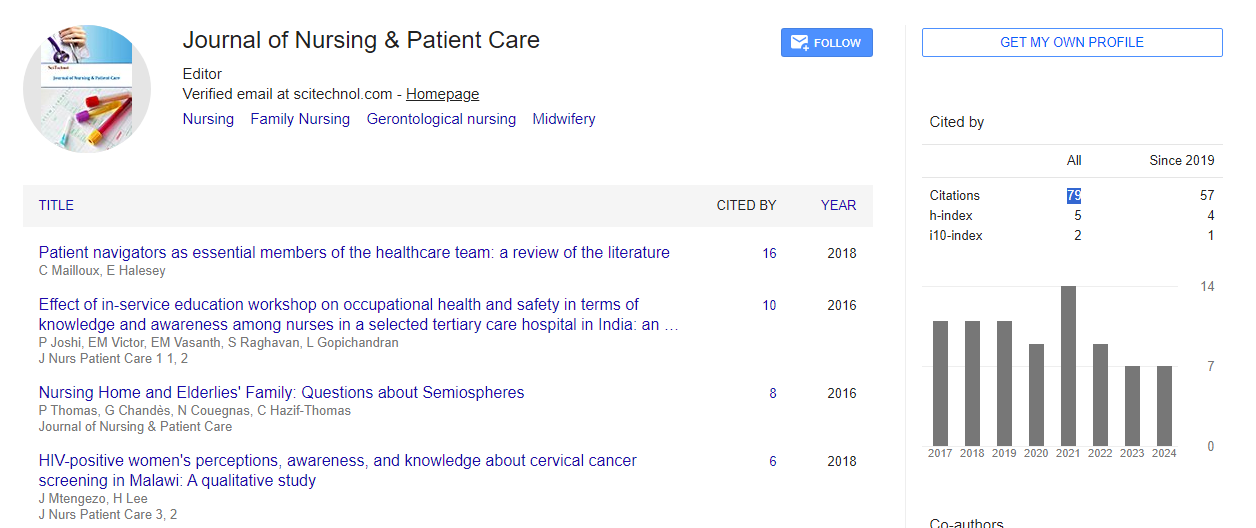Evaluating stress relief and stress effects with cognitive appraisal and perceived stress constructs
Dale M Hilty
Mount Carmel College of Nursing, USA
: J Nurs Patient Care
Abstract
Researchers investigating cognitive appraisal and stress have focused on applying their findings to the creative arts, pregnancy, psychotherapy, academic and sleep. The purpose of this educational intervention was to examine the effects of stress and stressors experienced by first semester Bachelor of Science of Nursing undergraduate students. 184 questionnaires were completed by the participants. The questionnaire consisted of two sections. First, the Brief College Student Hassle Scale (BCSHC) measured stressors where participants rated their school and personal stress levels. Hypothesis-1: Determine whether the stress was a multidimensional construct for BSN students. Using SPSS 25, Exploratory Factor Analysis Principle Axis (EFAPE) was used to select underlying factors and items (loadings>0.50), Hypothesis-2: Determine if the coefficient alpha reliability coefficients for the EFAPE common factors had estimates greater than 0.70, Hypothesis-3: Determine the difference between participant ratings on questions measuring school stress level and personal stress level. Using SPSS 25, the independent t-test would be to determine significant differences between the two groups and Hypothesis-4: Determine whether a mean difference in the answers measuring stress relieving techniques and the effects of stress was presented for the fore-mentioned groups. Using SPSS 25, chi-square test would evaluate this hypothesis. The results are as follows: Hypothesis-1: The EFAPE analysis found two factors (eigenvalues: 2.25, 1.71) based on the screen test accounting for 65.9% of the variance. Six of the BCSHC hassles/frustrations had factor loadings greater than 0.50. The common factors were named school (three questions) personal (three questions), Hypothesis-2: Coefficient alpha estimates: School, 0.748 and personal, 0.721, Hypothesis-3: Independent t-test found significant differences for the two groups (school, p=0.004; personal, p=0.000) and Hypothesis-4: Chi-square test was applied to relieving stress techniques and stress effects data, resulting significant findings (p=0.012-0.041). The initial psychometric findings for the instrumentation offer support for the measurement of stress concepts for the undergraduate nursing students. Future educational interventions may explore stress effects and effective ways of relieving stress for BSN students in order to increase the likelihood of successful adaption to their academic environment.
Biography
Dale M Hilty is an Associate Professor at the Mount Carmel College of Nursing, USA. He has completed his PhD in Counseling Psychology from the Department of Psychology at The Ohio State University. He has published studies in the areas of psychology, sociology and religion.
E-mail: dhilty@mccn.edu
 Spanish
Spanish  Chinese
Chinese  Russian
Russian  German
German  French
French  Japanese
Japanese  Portuguese
Portuguese  Hindi
Hindi 